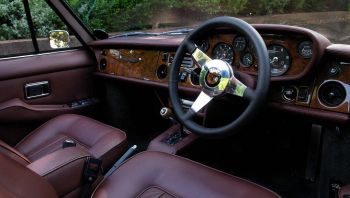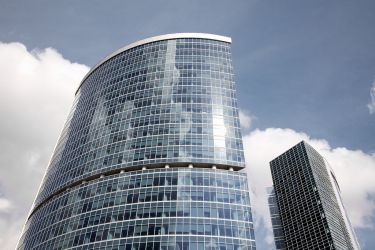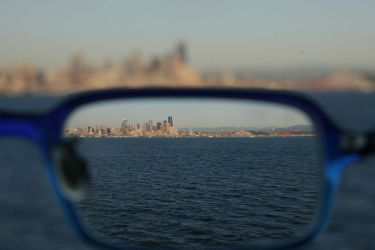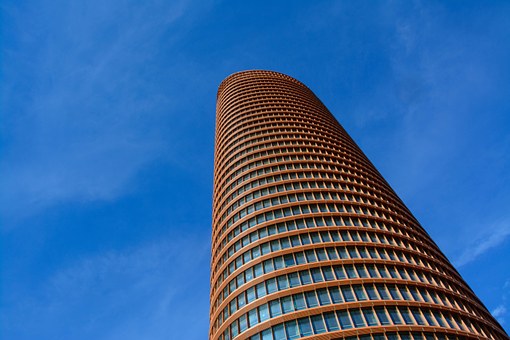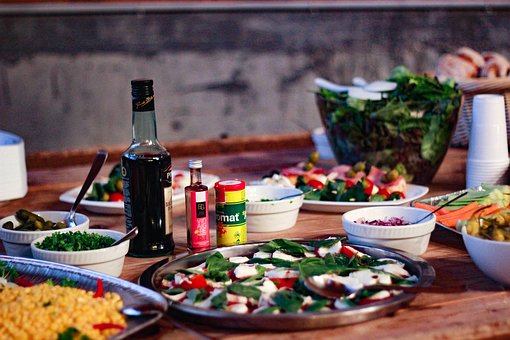Modifying window panes with thin films can block infrared rays from entering a building, an innovation that can make cars and homes more energy-efficient by limiting the need for air conditioners and heating units. The technology behind these films—layer-by-layer deposition—features many remarkable applications in the present and promises even more for the future.
Introduction
You are enjoying a warm mid-summer day at the beach, soaking up the rays from the sun high in the sky. The time is approaching for you to leave, and as you gather your towel and sandals and walk toward your car, your good mood suddenly fades. It dawns on you that before you can consider getting in your car to drive home, you will need to open all of the car doors and blast the air conditioner to avoid a heat stroke. Suddenly, you also regret your choice of black leather seats and the beautifully sunny parking spot you selected. Not only will the heat trapped in the car waste your time and cause you discomfort, it will also cost you money to run the air conditioner. The summer heat was enjoyable out on the sandy beach, but inside your car the intense heat can be uncomfortable, dangerous and expensive.
Imagine a car that doesn’t overheat, even on the hottest of summer days. Leaving the beach, you need not fear the seatbelt burning your bare skin or the hot, stuffy air troubling your breathing. You could put a foldable heat shield on the dashboard of the car and on every window, but what if you could engineer car windows and windscreens to keep the heat out with no shield at all? With Layer-by-Layer (LbL) technology integrated into the car windows, this kind of protection could become standard for new cars everywhere.
The Problem
Before we can explore the solution, however, we must explore the nature of the problem, which arises from the way that heat enters our car windows in the first place. Heat from the sun comes in the form of infrared radiation, which is composed of waves of light with wavelengths of 700 nanometers to 100 millimeters [1]. Light at this wavelength cannot be seen by human eyes, but we can feel it as heat. The light we can see is called visible light, which ranges in wavelengths from 380 to 750 nanometers, and corresponds to the colors of the rainbow from red to violet [1].
The sun continually radiates infrared rays, so we can always feel its heat, especially in summer. But why is the beach a pleasant temperature while our car interior gets significantly hotter? When heat comes into contact with physical objects, such as the leather seats inside our cars (Fig. 1), it is absorbed. The objects then slowly release the heat back into the air. In a closed environment like a car’s interior, the temperature can become dangerously high because the re-emitted heat cannot exit the space. If car windows were able to reflect the infrared waves to prevent them from entering the car at all, the dangers and inconvenience of a hot day would no longer be a daily worry. The American Dermatological Association explains that infrared radiation from the sun is “readily transmitted through standard glass,” but protective glass can block the infrared radiation while still allowing for the passage of visible light [2]. If car windows had such protective glass, a comfortable, controlled, and safe environment could be maintained in any car’s interior.
Such a solution seems obvious. Although the films do not yet function with optimal efficiency, other kinds of window coatings that reduce heat transmission into homes have been used for years, and the application of LbL films to windows has recently been engineered and developed.
An Existing Solution
Introduced in the 1980s, low-emissivity technology is still incorporated into home windows today [3]. “Low-emissivity” means that less heat enters or leaves a space [4]. The purpose of this technology is to maintain a cost efficient home by reducing the need for air conditioning. Low-emissivity coatings, commonly referred to as low-e coatings, are an extra plastic layer applied to windows that reduce the amount of infrared radiation that can enter the home through the windows. This is accomplished by vacuum-depositing a layer of silver onto a plastic sheet and placing it between two window panes [3]. The result is a transparent coating on the window, and infrared rays are absorbed by the low-e layer instead of transmitting directly through the window. The technology is “low” emissivity because it lowers the amount of heat entering the home, but the coating does not eliminate the entering heat completely. Commercial low-e coatings claim to reduce about 87% of near infrared radiation [5].
While low-emissivity technology was a significant development in the 1980s and is often implemented today in newer buildings (Fig. 2), energy costs are as cumbersome as ever, and we are still cringing at the thought of sitting on black leather seats in the middle of July. LbL deposition, a more recent technology, was first introduced in 1966 but developed into a practical process only 20 years ago [6]. Today, LbL technology may be a more efficient, cost-effective solution to the problem [7][8].
Layer-By-Layer
Layer-by-layer deposition (LbL) is a considerable advancement in the nanotechnology world that creates thin films on the nanoscale (the scale of one billionth of a meter). While the overall size of an LbL film varies and can be made large enough to coat an entire window, the typical width of an LbL film is anywhere from 100 to 700 nanometers thick [8]. Paula Hammond, a professor at MIT, puts things in perspective for us: “If you were to take a piece of your hair and lay it lengthwise . . . [and] cut that piece of hair into 10,000 even slices, one of those slices would be a nanometer” [9]. The exceptionally thin films made by the LbL process can reflect infrared rays and may be a revolutionizing advancement.
The process of constructing LbL films for a surface makes use of the simple rule that “opposites attract.” A film is created by alternately layering two solutions that are attracted to each other—and therefore “stick” together—to cumulatively create a film. These solutions are composed of ions, which are tiny charged particles. Positive ions (cations) and negative ions (anions) attract one another with electrostatic forces, which operate between particles of opposite charge. Cationic solutions (solutions rich in cations) and anionic solutions (solutions rich in anions) are the main ingredients of LbL films.
Consider a film being created on a small glass surface. To construct the film, the anionic solution is sprayed evenly onto the glass to deposit a layer of anions. Next, the cationic solution is sprayed, and the cations stick to the anions that were previously applied. This leaves one uniform layer of anions and one uniform layer of cations that are bound to each other [10]. Fig. 3 shows a glass surface with one layer of anions and one layer of cations that were sprayed on to start the process of making a LbL film [10]. The process is not unlike spreading peanut butter on a piece of bread, and then spreading jelly on top of the peanut butter. The only difference is the ingredients are being applied with a spray rather than being spread. An anion layer and a cation layer (the peanut butter and the jelly) together are called a bilayer. The repetition of spraying anionic solution and then cationic solution on a surface results in a thin film consisting of several bilayers (Fig. 4) [7]. We can think of a LbL film as a multi-decker peanut butter and jelly sandwich, although certainly not as tasty!
LbL technology becomes useful for heat reflecting applications when films are made by alternating two different bilayers that transmit light differently; these films are called Bragg Stacks. Since light does not travel at the same rate through everything, materials have a refractive indices that indicate how quickly light passes through that each medium. Substances that allow light to penetrate very quickly, like air, have a low refractive index while spaces that allow light through more slowly, like water or glass (Fig. 3), have a higher refractive index. A Bragg Stack is comprised of two alternating bilayers, one with a high refractive index and one with a low refractive index [11]. In the case of our peanut butter and jelly, one bilayer could be made out of creamy peanut butter and grape jelly, which have a “low” refractive index, and another bilayer could include chunky peanut butter and strawberry jam, which have a “high” index.
The effect of alternating bilayers of high and low refractive indices causes constructive and destructive interference of incident light [12][13]. This essentially means that light of a certain wavelength will be reflected off of the film’s surface, while all other light will be transmitted through the film. The true beauty of LbL films is that the wavelength of light that will be rejected by the film can be deliberately selected. The thickness of the film is what determines which wavelength of light will be reflected from the film, and the thickness of the film can easily be controlled [12]. The thickness of the film corresponds directly to the number of bilayers in the film, just as the height of a multi-decker peanut butter and jelly sandwich is directly dependent upon the number of layers of peanut butter and jelly you have added; choosing the reflected wavelength is as easy as choosing the number of bilayers that are sprayed onto the film. Because there is high control over the thickness of the films (Fig. 5), the films can be engineered to reflect any wavelength of light, which opens up many practical applications for the films [14]. Thus, the unwanted infrared rays that threaten the temperature of our car interior can be reflected when the appropriate number of bilayers is incorporated into a film, and our beach-day blues will be no more [13].
Future
Aside from its potential for infrared reflecting films, LbL deposition is also being used for a variety of other products, including color applications. The films can also reflect any wavelength of visible light, from red to violet. If the film is engineered to reflect the wavelength of a specific color, the film will actually appear to be that color. The color created by LbL films is unique in that it exhibits “optical interference effects” [12] and thus imitates the three-dimensional color seen in nature on the wings of butterflies (Fig. 6), on the feathers of peacocks, and in opalescent pearls—an accomplishment ordinary paint cannot yet achieve [8][12]. LbL films can also be engineered for use as anti-reflective coatings, which would enhance the ease of viewing screens on mobile devices, computers, or TV screens by eliminating visible light reflection [15].
Conclusion
In order to maintain temperature-controlled interior spaces, LbL deposition technology proves to be much more effective than low-emissivity coatings in reducing the amount of heat entering a home or car through a window. As we recall that low-e coatings prevent about 87% of heat from entering a home, it is all the more remarkable that LbL films are nearly 100% effective in reflecting heat. The process of assembling LbL films is also much more cost effective and efficient than other processes of creating films, such as that of low-e coatings. The process costs relatively little and uses a simpler technique than those required for low-e coatings.
LbL assembly is an increasingly viable commercial process, and efforts are being made to implement the process on an industrial scale. LbL deposition is currently limited to small-scale depositions, meaning a limited square-inch film can be made at one time. This is because a good film should be perfectly uniform, which is easy to do on a small scale, but is more complicated on a large scale. Should LbL deposition become commercially available, we can expect to see this technology everywhere: car makers could choose to put the films directly in the glass they use for windows; homes and commercial buildings could use the infrared reflecting films to maintain energy efficient and cost-effective rooms; we may be able to watch TV and surf the web on our computers outside on a sunny day; and paint companies could use the films to create vivid, three-dimensional paint color. From car windows to paint cans, LbL may soon revolutionize the world one nano-step at a time.
